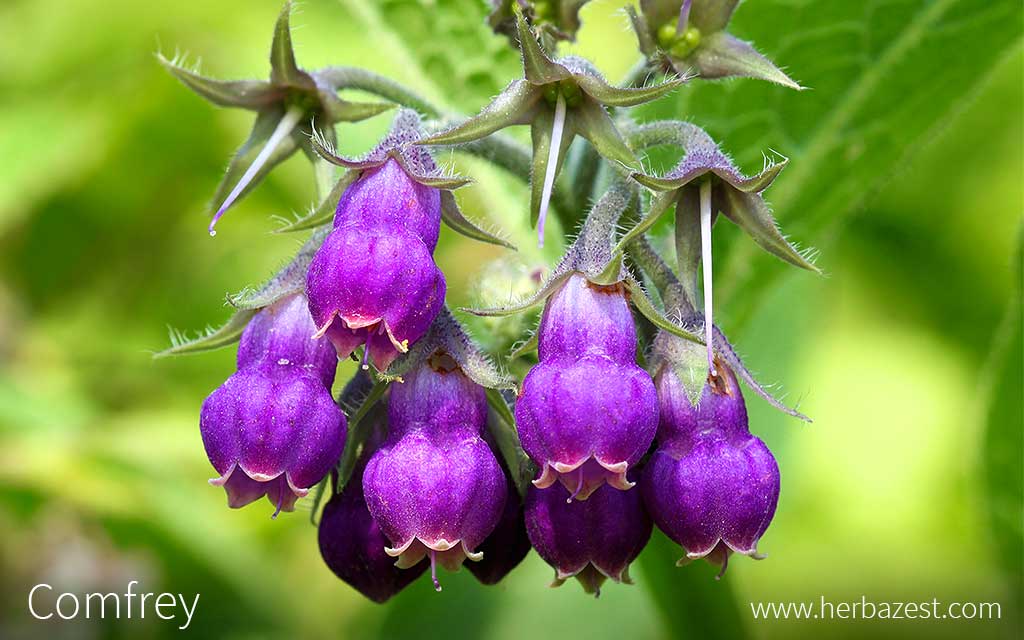Hey fellow garden enthusiasts! I’ve been experimenting with different natural fertilizers in my garden, and I just gotta tell you about this amazing plant called comfrey. If you’re wondering whether comfrey is high in potassium – oh boy, let me spill the tea (or should I say, comfrey tea? ).
What Makes Comfrey a Potassium Powerhouse?
Let’s cut straight to the chase – YES, comfrey is super high in potassium! As a garden blogger who’s been growing and using comfrey for years, I can tell you it’s basically like nature’s multivitamin for your plants Here’s what makes it so special
- Rich in NPK (Nitrogen, Phosphorus, Potassium) – higher ratios than farmyard manure
- Exceptional source of potassium (K) – crucial for fruit production
- Contains vitamin B12 – one of the few plants that does!
- Natural and free (after buying your first plant)
Types of Comfrey You Should Know About
There’s two main types I wanna talk about
-
Common Comfrey (Symphytum officinale)
- Self-seeds like crazy
- Can get a bit invasive (watch out!)
-
Russian Comfrey ‘Bocking 14’ (Symphytum x uplandicum)
- Sterile variety
- Better behaved in the garden
- My personal recommendation!
Making Your Own Comfrey Liquid Feed
I’m gonna share my tried-and-true recipe for making comfrey tea (warning: it ain’t gonna smell like roses!):
Basic Recipe:
- Fill a bucket with chopped comfrey leaves (pack ’em in!)
- Add water using one of these ratios:
- Little water = black liquid (dilute 1:20)
- Two watering cans (10L) = cola brown liquid (dilute 1:10)
- Full barrel of water = ready-to-use mixture
Pro tip: ALWAYS use a lid unless you want your garden smelling like… well, let’s just say it’s not pleasant!
When and How to Use Comfrey Feed
From my experience, here’s the best way to use this magical plant juice:
- Harvest time: 4x per year (spring through autumn)
- Application: Weekly for heavy feeders
- Perfect for:
- Tomatoes (after flowers set)
- Peppers
- Aubergines
- Squash
- Pumpkins
- Sweetcorn
- Any struggling plants
Growing Your Own Comfrey
Listen up, cuz this is important! Here’s what I’ve learned about growing comfrey:
- Likes shade (perfect for hiding those ugly compost bins!)
- Super low maintenance
- Plant near compost – it’ll catch any nutrients that leach out
- WEAR GLOVES when handling (those hairs can be irritating!)
Mixing It Up: Comfrey + Nettle Power Combo
Want a super-charged garden feed? Here’s a little trick I use:
- Comfrey = high potash
- Nettles = more nitrogen
- Combined = perfectly balanced feed
The Money-Saving Aspect
Why spend $$$ on synthetic fertilizers when you can grow your own? After buying one comfrey plant, you’ll have:
- Free fertilizer for life
- Sustainable garden practice
- Natural, organic solution
- No more expensive store-bought feeds
Common Mistakes to Avoid
Learn from my oopsies:
- Not wearing gloves (rookie mistake!)
- Forgetting the lid (your neighbors won’t thank you)
- Using common comfrey instead of Bocking 14 (hello, invasive nightmare!)
- Not diluting properly (too strong can harm plants)
My Personal Experience
I’ve been using comfrey in my garden for years now, and let me tell you – the results are amazing! My tomatoes are thriving, and my squash plants are going bonkers. Sure, the smell takes some getting used to (my partner still complains), but the benefits totally outweigh the stink!
Final Thoughts
If you’re looking for a sustainable, cost-effective way to boost your garden’s potassium levels, comfrey is your best friend. It’s like having a free fertilizer factory right in your backyard! Just remember to hold your nose when brewing the tea, and you’ll be golden!
Got questions about using comfrey in your garden? Drop ’em below! I’m always happy to share what I’ve learned through my gardening adventures.

How to make comfrey liquid fertiliser
- Cut off the leaves about 5cms above soil level. Wear gloves, as the stems are covered in stiff hairs that can irritate the skin.
- Fill a bucket or barrel with water and add approx 1kg of cut or bruised leaves to every 15litres of water. You needn’t be too precise!
- Press the leaves down firmly so they are covered with water, and cover the container.
- After four to six weeks a noxious (very) smelly brown liquid is ready for use. There is no need to dilute.
- Strain off the sludge at the bottom, and put it on the compost heap.
How to use your comfrey liquid fertiliser:
- Use as a summer feed for tomatoes, peppers and cucumbers (apply as soon as the flowers have set fruit).
- For hanging baskets and pot plants.
- For other hungry flowering plants such as clematis and dahlias.
Turn Comfrey Leaves into a FREE High Potassium Plant Food | How to make Comfrey Tea to feed Plants
0
